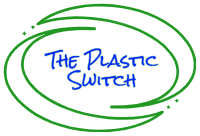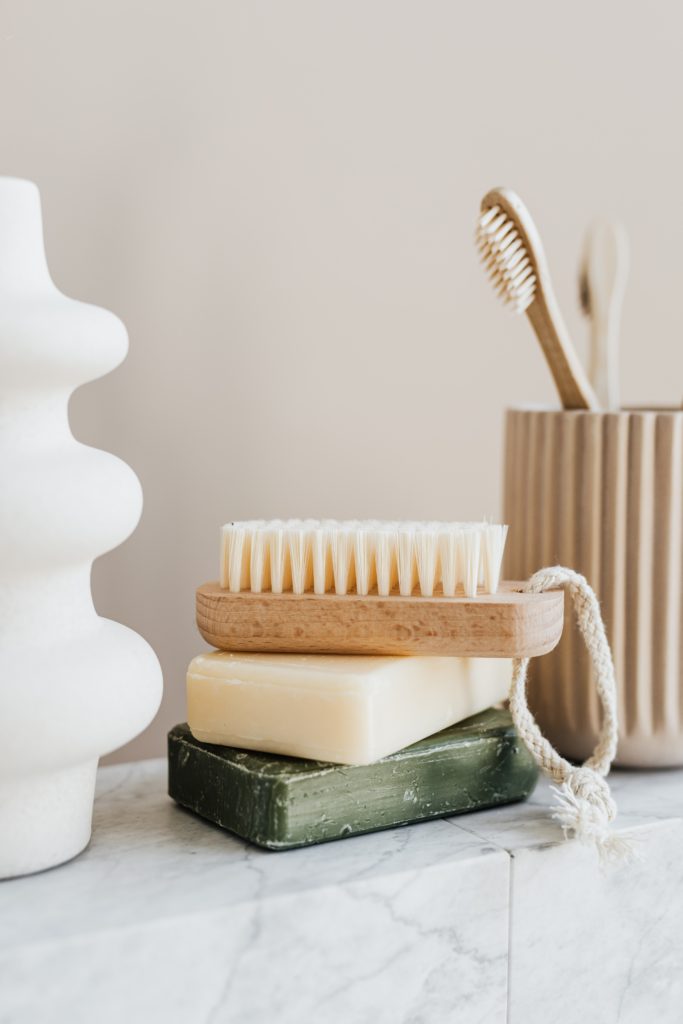Plastic is a problem. It has been clear to me for a while that plastic, especially single-use plastic, is piling up and causing environmental issues. I decided years ago that I should take personal responsibility, and follow the advice of advocates–REDUCE-REUSE-RECYCLE! And for years my focus, like that of many Americans, was on recycling.
RECYCLING OF PLASTIC IS A MYTH
But in the past few years, especially since China decided to turn away plastic recycling waste, it has become clear that recycling is not the solution. According to the OECD, only 4% of plastic waste from the U.S. was recycled in 2019, with most U.S. plastic waste (73%) going into landfills.
The purpose of this blog is not to convince you that recycling plastic waste is not the solution–there are plenty of place to find that information. In the RESOURCES Section of this website you will find some interesting articles and videos on the failure of recycling. Rather, once you recognize that the only real alternative is to REDUCE plastic use, this blog can help you find great plastic-free products that will make it relatively easy to swap out of plastic products or products packaged in plastic.
HOW TO REDUCE PLASTIC USE
The purpose of this blog is to provide the information to help make personal changes to REDUCE your plastic use. Sometimes this might require completely giving up buying certain things, like bottled water. Other times it means switching to another form of a product (for example, using bar soap instead of body wash) or switching to products packaged in glass, aluminum or paper, instead of plastic.
As I have tried to reduce my own use of plastic over the past several years, I have been frustrated with several barriers to finding great plastic-free products that perform well and are easy to find and use. In this blog I will be describing the products that I have tried, and evaluating them on two characteristics:
- Same User Experience as Conventional Products
- Convenience of Switching
While making solid price comparisons is quite difficult because of varying use-up rates, the range of prices in a category, and distribution issues for plastic-free products, I will also try to provide a rough price comparison vs. mainstream products.
The hope is that these characteristics will help give you a good feel for how products stand up to traditional products you might be using, and to make it easy to find plastic-free products that will work for you.
WHAT MAKES IT SO HARD TO FIND THE RIGHT PLASTIC-FREE PRODUCTS?
- AVAILABILITY: Products without plastic packaging are difficult to find in mainstream stores like Walmart, Kroger and CVS.
- The good news is that more and more products are becoming available all the time
- I have often found great products offered from online stores, but purchases of products online have sustainability issues of their own. Ideally plastic-free products will be more widely available as more people (like you!) make the switch.
- NEW COMPANIES: Many plastic-free products are sold by small, start-up companies. I love supporting entrepreneurs making a go of it, but sometimes these smaller companies have limited availability or uneven quality.
- GREENWASHING: Companies are seeing demand for plastic-free products but don’t want to do the hard work of making their product truly plastic-free. I am most appalled when I find a plastic-free product, like a bamboo toothbrush, in a plastic package–ugh! Or a half effort, like a bamboo handled scrub brush with plastic bristles. I will call these products out in special posts, called Frustration Friday, when I see them. But I will not review them as plastic-free products.
- ALL THINGS SUSTAINABLE: It is an admirable effort to try to solve all sustainability issues at once. And many plastic-free products are trying to do just that–plastic-free, all natural, no preservatives, organic, etc…. But at times this means that the product inside the plastic-free packaging may not be as effective as, or will be more expensive than, the conventional alternative. In a later post I will share my malodorous attempt to switch to deodorant packaged in paper rather than plastic. Let’s just say that transitioning to natural deodorant takes real commitment. Rather than winning on all sustainable characteristics, I am prioritizing plastic-free products that replicate a mainstream product experience at a reasonable price.
- COST: Products that are plastic-free or have eliminated plastic packaging are often more expensive than conventional products. This higher cost may be warranted because of higher ingredient or packaging costs, or because of the investment in innovation. But it may also have a higher price because plastic-free products are targeted at higher income consumers. To get to plastic-free solution at scale, price should not be a barrier to purchase! I am looking for plastic-free products that are accessible to prelace the mainstream products consumers are using today.
HOW PRODUCT EVALUATION WILL WORK
To help more people find plastic-free products that easily fit in their lives, I aim to find products that help avoid these barriers to a plastic-free switch. Each post will be structured to help readers understand how the product performs on the three characteristics:
- Product Description
- Performance
- Does the product provide similar/better/worse performance as conventional product
- For example, do laundry detergent sheets get clothes just as clean as liquid laundry detergent that comes in huge plastic jugs?
- Does the product live up to the plastic-free standard?
- For example, is the packaging truly plastic-free, or are you surprised by a plastic bag or container inside a paper package?
- Does the product provide similar/better/worse performance as conventional product
- Convenience of the switch
- How hard is it to use the plastic-free product vs. conventional product?
- For example, if I switch to milk in glass bottles, I have to return the bottles to the store to get back my deposit. That makes the switch more difficult.
- How hard is it to use the plastic-free product vs. conventional product?
- Rough Price comparison to conventional products
- Price is a little tricky to compare, and I will try to be consistent in how I make the comparison.
- Some barriers to accurate price comparison are:
- Dosing/use-up rates. Many plastic switch categories involve a change in product form, which makes it difficult to compare price per use. For example, when switching from body wash to bar soap.
- Many plaxtic-free products are sold in niche outlets (such as natural food stores) which might be more expensive.
- I live in a relatively high-priced grocery market–prices here may not represent prices that you see in your local store, making price comparisons inaccurate.
The rating of products on these criteria will be indicated by leaves of different colors (green for great, yellow for meh, red for poor). Each product will be rated on each of the two main characteristics–Performance and Convenience–and then those ratings will be combined, with an overlay of price vs. mainstream, into a total rating.
A FEW NOTES ABOUT EVALUATIONS AND RECOMMENDATIONS
This blog is designed to find good quality plastic-free products at a reasonable price, to help more people ditch plastic. All evaluations are subjective, based on my experiences with plastic-free products that I have purchased. I will provide links to products that I evaluate, but I am not paid to recommend any products on this site. The ratings of products are completely subjective based on my usage, and the best price I can find for products.
I am always looking for great plastic-free products so please let me know if there are other products that I should try out and evaluate!




